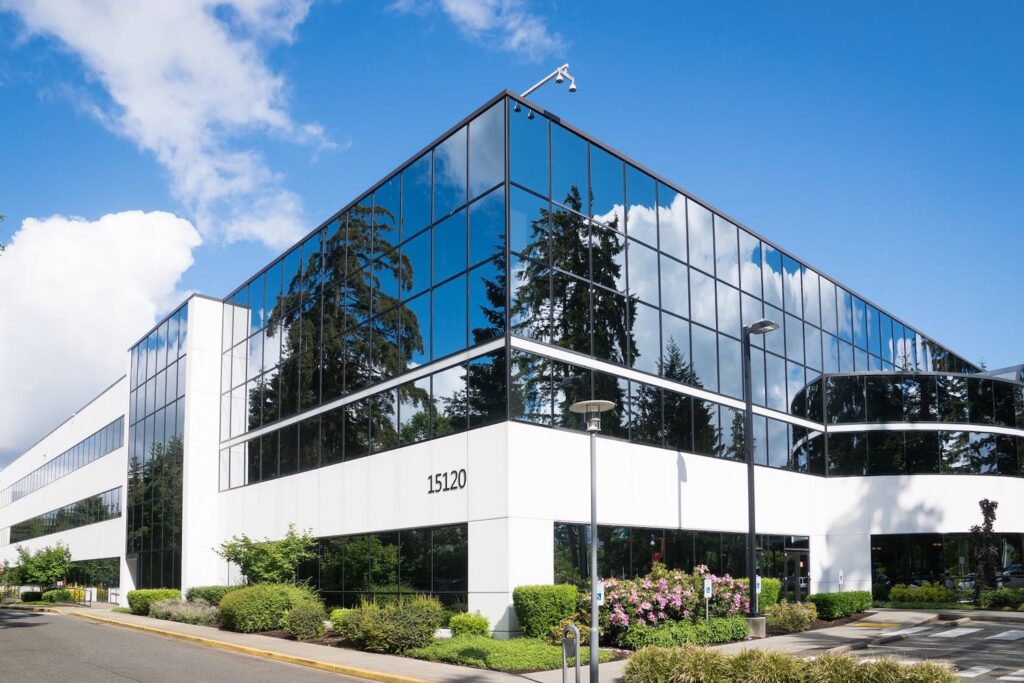
Knowing the importance of fire damper testing is essential to assuring your home and office buildings remain safe. Once the installation of your HVAC system is complete, its upkeep and routine inspections are imperative. Our team at Lloyd Industries is here to share the answers to our most frequently asked questions regarding:
- Fire damper basics
- How often should fire dampers be tested?
- What do HVAC tests entail?
Fire Damper 101
A fire damper is a type of passive fire protection product in a building’s air conditioning, heating, and ventilation (HVAC) ductwork. Preventative fire protection products limit the amount of damage a fire may potentially cause to a building. These products are typically hidden within walls, floors, and ceilings, integral to a building’s safety.
During a fire, a properly working fire damper activates, closing the blades within it and preventing smoke and flames from entering the HVAC system. These blades can activate in multiple ways; smoke detection or integration with your fire alarm system.
How Often Should Testing Occur?
Upon installation by a licensed contractor or HVAC expert, each damper must undergo a thorough inspection. Local and state inspection codes may vary, and the frequency between your HVAC inspections may depend on your industry. However, following installation, a damper must be tested after one year, regardless of the industry or building type. This follow-up inspection ensures the proper functioning of the damper. Once your one-year review is successful, your fire dampers will typically follow a routine testing schedule of once every four years for a non-healthcare facility. Hospitals require routine inspections once every six years.
What to Expect During a Fire Damper Inspection
Always consult a professional to conduct your HVAC inspection. When your inspector arrives to test your system, there are essential items they will test, including:
- Locate and operate every fire damper in your building by removing and resetting the link that ensures each damper will close entirely in the event of a fire.
- Make a note of the locations of each damper on a map for accuracy.
- The actuator will manually activate all smoke dampers to ensure it close completely.
Your inspector will provide you with a detailed report that includes:
- The location of each damper
- Each damper’s identification number
- The damper’s pass-or-fail status
- A detailed explanation of why any damper has received a failed status
Many companies will provide you with their before and after photos of each damper, inspection summary, and additional notes or recommendations.
Building Codes and Fire Damper Inspections
Navigating building codes and ensuring fire safety compliance is crucial for every property owner, whether you’re overseeing a new construction project or managing an existing building. When dealing with new construction, it’s imperative to engage in comprehensive discussions with your contractor and local government officials regarding the specific fire codes applicable to your area. Building codes can vary significantly from one state to another and even among different municipalities. By addressing these codes thoroughly and proactively, you can prevent potential delays in your building’s overall occupancy inspection, ultimately expediting your project’s completion and ensuring it’s safe for inhabitants.
Furthermore, it’s equally essential to recognize the significance of regular maintenance and testing of your HVAC system. These routine procedures are not only a matter of regulatory compliance but also integral to maintaining a robust fire protection plan. In the event of a fire, well-maintained fire dampers play a critical role in containing and controlling the spread of flames and smoke, helping safeguard lives and property. To ensure your building remains in compliance with safety regulations and that your fire protection measures are up to par, don’t hesitate to contact us at Lloyd Industries. Our expert team is ready to assist you in scheduling fire damper inspections, maintenance, and any necessary upgrades. Your peace of mind and the safety of your occupants are our top priorities.
Don’t hesitate to contact us at Lloyd Industries to schedule your fire damper inspections and ensure your building remains compliant with safety regulations. Your peace of mind is our priority.




